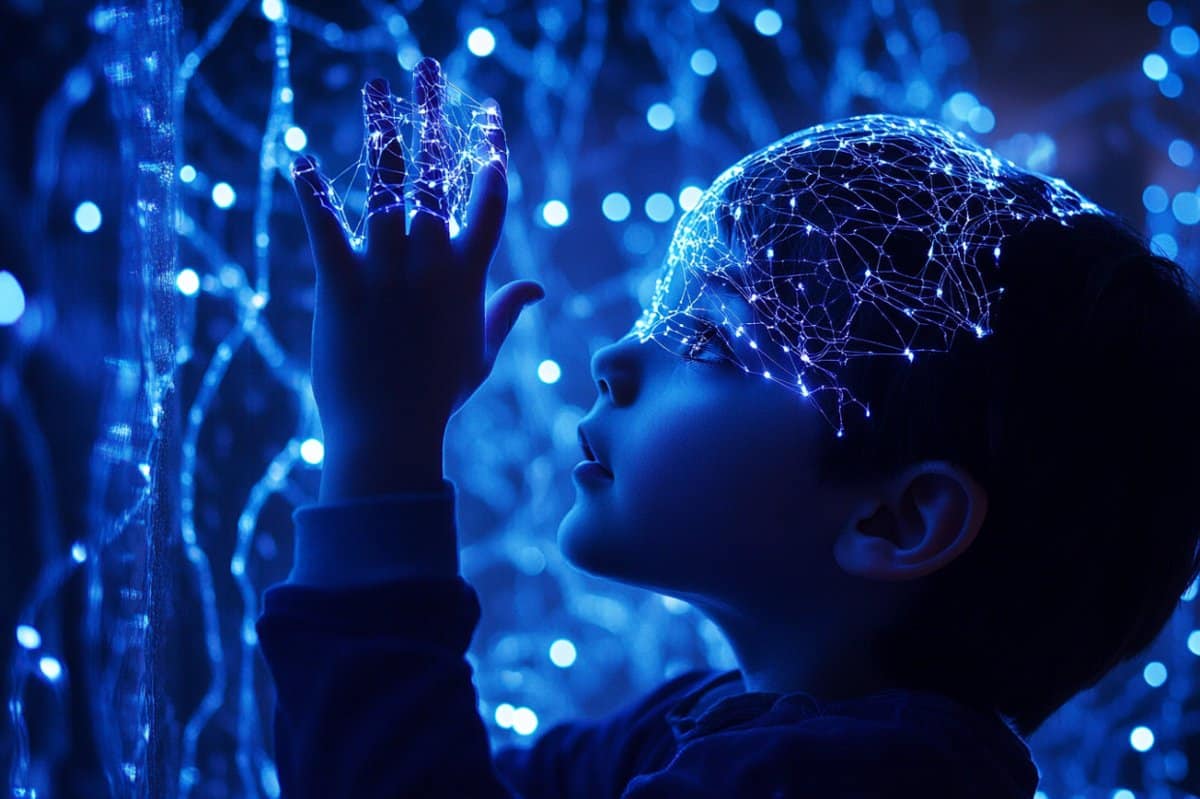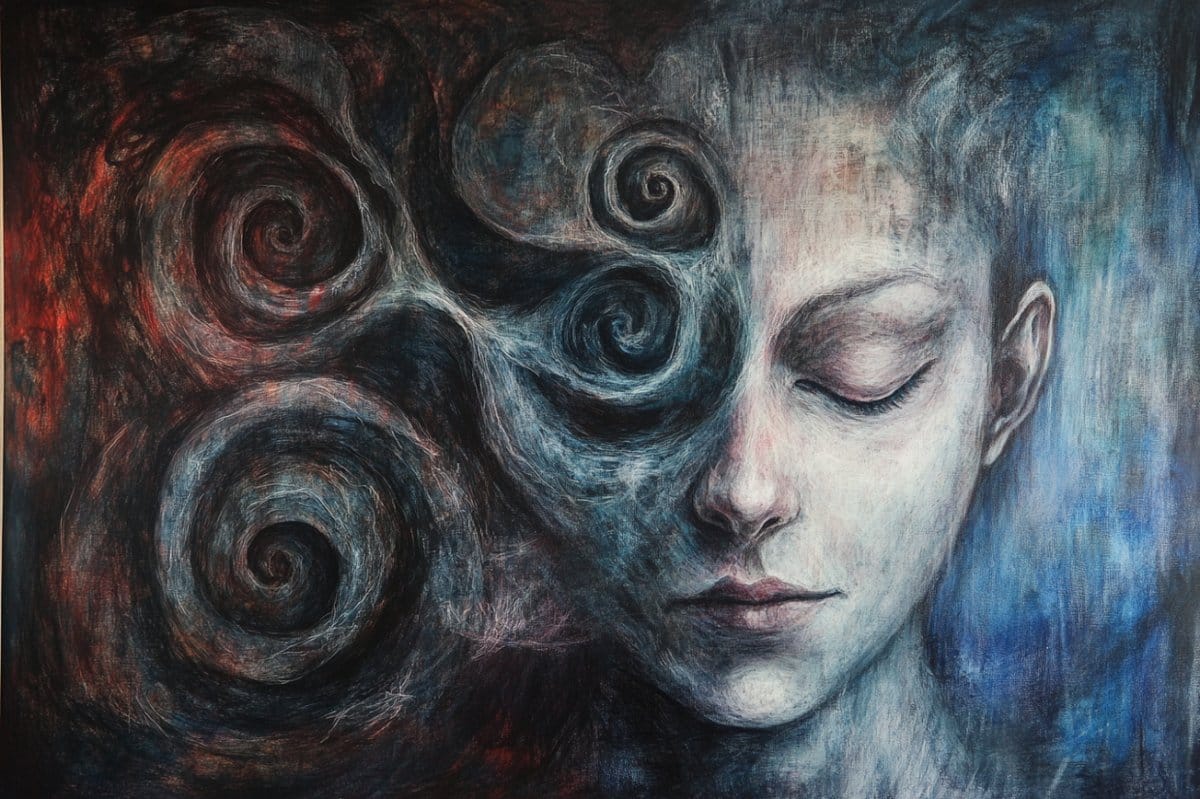Summary: A new study reveals that adults with autism process active and passive touch similarly, unlike neurotypical individuals whose brains reduce activity during self-initiated touch. This finding may help explain repetitive behaviors like stimming, which are common in autism and can serve as emotional regulation or sensory coping mechanisms.
Using EEG, virtual reality, and vibrotactile input, researchers created a realistic experimental setup to simulate touch and track brain responses. The study opens the door to understanding how sensory input impacts behavior and could inform future interventions to reduce harmful self-stimulation in autism.
Key Facts:
- Touch Perception Gap: Adults with autism showed similar brain responses to both active and passive touch.
- Sensory Prediction Deficit: This may indicate difficulty in predicting sensory outcomes, which could underlie stimming behaviors.
- Innovative Method: The study combined EEG, virtual reality, and tactile simulation for realistic and rigorous sensory testing.
Source: University of Rochester
Tapping a pen, shaking a leg, twirling hair—we have all been in a classroom, meeting, or a public place where we find ourselves or someone else engaging in repetitive behavior—a type of self-stimulatory movement also known as stimming.
For people with autism, stimming can include movements like flicking fingers or rocking back and forth.
These actions are believed to be used to deal with overwhelming sensory environments, regulate emotions, or express joy, but stimming is not well understood. And while the behaviors are mostly harmless and, in some instances, beneficial, stimming can also escalate and cause serious injuries.
However, it is a difficult behavior to study, especially when the behaviors involve self-harm.
“The more we learn about how benign active tactile sensations like stimming are processed, the closer we will be to understanding self-injurious behavior,” said Emily Isenstein, PhD (’24), Medical Scientist Training Program trainee at the University of Rochester School of Medicine and Dentistry, and first author of the study in NeuroImage that provides new clues into how people with autism process touch.
“By better understanding how the brain processes different types of touch, we hope to someday work toward more healthy outlets of expression to avoid self-injury.”
Researchers used several technological methods to create a more realistic sensory experience for active touch—reaching and touching—and passive touch—being touched.
A virtual reality headset simulated visual movement, while a vibrating finger clip—or vibrotactile disc—replicated touch. Using EEG, researchers measured the brain responses of 30 neurotypical adults and 29 adults with autism as they participated in active and passive touch tasks.
To measure active touch, participants reached out to touch a virtual hand, giving them control over when they would feel the vibrations. To measure passive touch, a virtual hand reached out to touch them. The participant felt vibrations when the two hands “touched,” simulating physical contact.
As expected, the researchers found that the neurotypical group had a smaller response in a brain signal to active touch when compared to passive touch, evidence that the brain does not use as many resources when it controls touch and knows what to expect.
However, the group with autism showed little variation in brain response to the two types of touch. Both were more in line with the neurotypical group’s brain response to passive touch, suggesting that in autism, the brain may have trouble distinguishing between active and passive inputs.
“This could be a clue that people with autism may have difficulty predicting the consequences of their actions, which could be what leads to repetitive behavior or stimming,” said Isenstein.
It was a surprising finding, particularly in adults. John Foxe, PhD, director of the Golisano Intellectual and Developmental Disabilities Institute at the University of Rochester and co-senior author of the study, remarked that this may indicate the difference in children with autism could be greater than their neurotypical counterparts.
“Many adults with autism have learned how to interact effectively with their environment, so the fact that we’re still finding differences in brain processing for active touch leads me to think this response may be more severe in kids, and that’s what we also need to understand.”
Location, Location, Location: Student Pools University Resources to Advance Autism Research
“I went into my PhD with the idea to have one big project that would use resources and expertise from both labs,” said Isenstein, who was co-mentored by Foxe and Duje Tadin, PhD, professor of Brain and Cognitive Sciences and co-senior author on the NeuroImage study.
“I knew pretty early on that I wanted to study something that would help us understand stimming, but it’s a pretty complicated concept. Everyone has been incredibly supportive of me building my ‘dream team’ of collaborations to make this experiment possible.”
Isenstein employed the expertise in EEG and touch from the Frederick J. and Marion A. Schindler Cognitive Neurophysiology Lab for her study. While the means to study proprioception—or sense of self-movement—and virtual reality came from the Tadin Lab.
“Humans are not stationary creatures, and things that happen when you are sitting still getting an EEG do not really mimic how you interact with things in real life,” said Isenstein. “It [virtual reality] was a really exciting way to study proprioception and body movements.”
“It was easy to see the importance of the project Emily proposed. It was also clear how difficult it would be to conduct a rigorous EEG study of active and passive touch in autism,” said Tadin.
“Emily achieved this goal by spearheading the first collaboration between John’s lab and mine, leveraging the resources and expertise from the Medical Center and the University, including the Mary Ann Mavrinac Studio X. This is a wonderful example of the boundless possibilities in Rochester for a motivated student who takes advantage of the robust research resources that are available here.”
Using EEG, vibrotactile inputs, and virtual reality in research is not novel, but creating a study where the three technologies work in tandem, is a newer approach. Isenstein also turned to the Mary Ann Mavrinac Studio X at the University of Rochester to brainstorm how to get these technologies to work together.
Studio X is an extended reality hub on campus that offers workshops, equipment rentals, and provides a multidisciplinary space for researchers and creators to collaborate on projects. “It really is an incredible resource for researchers trying to incorporate virtual reality into their research,” said Isenstein.
The setup went through several trial periods to figure out how to do it without compromising data quality.
“It was really exciting when I could finally get to the point to use these technologies together,” said Isenstein.
“We ended up mounting the VR headset onto a frame that people could just lean into and then their hands were free to move around and do whatever. And their head was still very stationary. This setup allowed the team to simulate a realistic sensory environment without compromising on data quality.”
Researchers aim to apply these methods to more complex movements in people with autism to understand stimming better.
Additional authors include Ed Freedman, PhD, Grace Rico, and Zakilya Brown of the University of Rochester.
Funding: This research was supported by the Schmitt Program in Integrative Neuroscience (SPIN) through the Del Monte Institute for Neuroscience pilot program, the Eunice Kennedy Shriver National Institute of Child Health and Human Development, the National Eye Institute, the National Institute on Aging, and the National Institutes of Health.
About this tactile processing and ASD research news
Author: Kelsie Smith Hayduk
Source: University of Rochester
Contact: Kelsie Smith Hayduk – University of Rochester
Image: The image is credited to Neuroscience News
Original Research: Open access.
“Adults on the autism spectrum differ from neurotypical peers when self-generating but not passively-experiencing somatosensation: a high-density electrophysiological (EEG) mapping and virtual reality study” by Emily Isenstein et al. NeuroImage
Abstract
Adults on the autism spectrum differ from neurotypical peers when self-generating but not passively-experiencing somatosensation: a high-density electrophysiological (EEG) mapping and virtual reality study
Little is known about how different features of tactile inputs affect somatosensory perception in autism.
In this study we combined high-density electroencephalography (EEG) and virtual reality (VR) to assess how the volition and pattern consistency of somatosensory stimulation influenced the electrophysiological responses in neurotypical (n = 30) and autistic (n = 30) adults.
Specifically, we compared N1 and P300 amplitudes when vibrotactile stimulation were actively triggered by self-motion (Active) versus passively triggered by target-motion (Passive).
We also measured the mismatch negativity (MMN) to assess how deviations in the pattern of stimulus duration affected the electrophysiological responses.
We observed comparable responses regardless of pattern deviation in the MMN time window between groups, but different patterns of amplitude in this time frame based on whether the stimulation was Active or Passive.
In the autism group we observed smaller N1 amplitudes in response to Passive, but not Active, vibrations as compared to the control group. Conversely, there were overall larger magnitude P300 amplitudes in the autism group, but comparable levels of Passive-to-Active attenuation between groups.
Overall, the autism cohort demonstrated variation from the neurotypical cohort with respect to the volition of the stimuli, but there were comparable results between groups in response to pattern deviation.
These findings suggest that there are subtle differences in how adults with and without autism handle self-generated and externally-generated somatosensory sensations.





